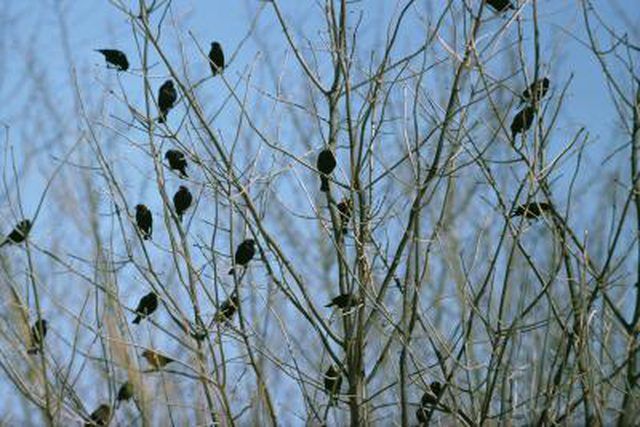Bulbs
Flower Basics
Flower Beds & Specialty Gardens
Flower Garden
Garden Furniture
Garden Gnomes
Garden Seeds
Garden Sheds
Garden Statues
Garden Tools & Supplies
Gardening Basics
Green & Organic
Groundcovers & Vines
Growing Annuals
Growing Basil
Growing Beans
Growing Berries
Growing Blueberries
Growing Cactus
Growing Corn
Growing Cotton
Growing Edibles
Growing Flowers
Growing Garlic
Growing Grapes
Growing Grass
Growing Herbs
Growing Jasmine
Growing Mint
Growing Mushrooms
Orchids
Growing Peanuts
Growing Perennials
Growing Plants
Growing Rosemary
Growing Roses
Growing Strawberries
Growing Sunflowers
Growing Thyme
Growing Tomatoes
Growing Tulips
Growing Vegetables
Herb Basics
Herb Garden
Indoor Growing
Landscaping Basics
Landscaping Patios
Landscaping Plants
Landscaping Shrubs
Landscaping Trees
Landscaping Walks & Pathways
Lawn Basics
Lawn Maintenance
Lawn Mowers
Lawn Ornaments
Lawn Planting
Lawn Tools
Outdoor Growing
Overall Landscape Planning
Pests, Weeds & Problems
Plant Basics
Rock Garden
Rose Garden
Shrubs
Soil
Specialty Gardens
Trees
Vegetable Garden
Yard Maintenance
How to Get Rid of Black Birds Naturally
How to Get Rid of Black Birds Naturally. Although many people use"blackbird" as a catch-all phrase for any generic black birds, the dark-colored birds that wreak havoc on bird feeders and gardens can include European starlings and common grackles, along with true blackbirds. Grackles have yellow eyes and iridescent purplish- black...

Although many people use"blackbird" as a catch-all phrase for any generic black birds, the dark-colored birds that wreak havoc on bird feeders and gardens can include European starlings and common grackles, along with true blackbirds. Grackles have yellow eyes and iridescent purplish- black plumage, while European starlings feature bright yellow bills; blackbirds have black beaks and eyes. Regardless of the species, there's no doubt that black birds--often found congregating in large, raucous flocks in deciduous trees in the summer--can become major pests. They compete with native songbirds, damage flower beds, vegetable gardens and citrus trees, and produce copious amounts of droppings that corrode stone, metal, masonry, and car finishes, as well as killing grass. As if this weren't enough, non-native European starlings attack beneficial native species such as purple martins, killing nestlings and take over nests. By using some simple techniques, you can increase your odds that you will able to banish black birds from your yard.
Things You'll Need
Wire mesh or bird netting
Sheet metal, wood or plastic foam blocks
Compact disk with starling, grackle or blackbird alarm call, available at sporting goods stores
Noise bombs
15-millimeter flare pistol
Electrical tape
Mylar balloons
Use wire mesh or bird netting to cover the undersides of rafters and other spots where blackbirds might be tempted to roost. Make sure the mesh is spaced no smaller than one and one-half inches; if larger, the blackbirds will still be able to get in.
Cover any ledges where blackbirds might be likely to roost with sheet metal, wood, or plastic foam blocks. Attach the material so that it tilts up and away from the ledge at a 60-degree angle; the oblique angle makes it hard for nuisance birds to cling and roost.
Play a compact disk or cassette featuring alarm and distress calls of starlings, grackles and blackbirds, playing it at high volume through large speakers. Begin playing the CD about an hour before the birds come back to their customary roosting place for the night, and keep playing it until well after dark.
Reinforce the discouraging message of the CD by punctuating it with blasts from deterrent noise-makers such as "noise bombs," available at sporting good stores. Fire the bombs from a 15-millimeter flare pistol, timing and aiming so that the frightening device explodes underneath or directly in front of the flock of birds approaching the roost. You may need to repeat the procedure for several nights in a row, but it should eventually be effective. According to the Purdue University Wildlife Conflicts website, the use of frightening devices has proved to be the most successful method of dispersing bird roosts. Check with your local police department regarding noise regulations, and notify your neighbors.
Make the roost less attractive to the blackbirds by drastically pruning trees in which they congregate. According to the Washington Department of Fish and Wildlife, you should remove 30 to 50 percent of the foliage.
Remove perches from your bird feeder and cover all but one feeding port with electrical tape to discourage blackbirds from depleting food supplies and chasing songbirds away. According to the Washington Department of Fish and Wildlife, most songbirds do not need perches to access the seed, but starlings will have a difficult time landing, perching and consuming it.
Suspend Mylar balloons on tethers so that they float at least 3 feet over the roosting site.
Tips & Warnings
If you are using helium balloons to startle blackbirds, move them every other day so the birds don't become desensitized to them.
Offer thistle seed and sunflower seeds at your bird feeder to attract desirable birds. To avoid attracting blackbirds, never offer corn of any kind.